You may easily see the Apple logo when walking down a busy street in a big city or driving on the highways. You can instantly recognize the emblem and know who made a MacBook, iPad, or iPhone when you see one. Beyond only dominating the technology space, Apple Success has achieved more. The company has achieved something that many others only dream of global brand awareness and a legacy that will outlive the lives of the living.
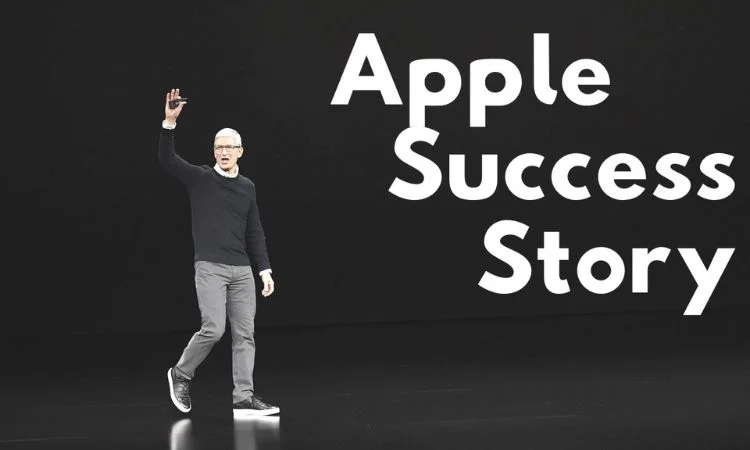
Source: Youtube
Apple Inc. is a multinational technology business specializing in internet services, software applications, and portable gadgets. Its headquarters are in Cupertino, California. With sales of personal computers totaling US$365.8 billion in 2021, Apple is the largest information technology firm, the second-largest mobile phone manufacturer, the fourth-largest personal computer vendor by unit sales, and the second-most valuable company in the world.
Amazon, Alphabet, Microsoft, and Meta are the five American information technology industry giants.
The iPhone is a line of mobile phones from Apple that use the iOS operating system. The macOS operating system is the focal point of the Mac line of computers.
Apple offers a variety of multifunctional tablets called iPads that are powered by the iPad OS operating system. Under Home, Wearables, and Accessories are Apple TV, AirPods, Apple Watch, Home Pod, Beats goods, iPod touch, and other accessories from both Apple and third parties.
The company sells wireless headphones called “Air Pods” that can speak with Siri. The company’s line of smartwatches is called Apple Watch. AppleCare, Advertising, Cloud Services, Digital Content, and Payment Services are among its products and services.
Apple – Industry
The world economy has suffered greatly as a result of the COVID-19 pandemic. Numerous end-user industries have been affected, notably the production of electronics. 40% of global electronics manufacturers and suppliers surveyed for an IPC study in March 2020 believe that the COVID-19 epidemic will have the biggest effect on consumer electronics. A further 24% of respondents predicted that the worst-hit category would be industrial electronics, while 19% believed the automotive electronics category would suffer the most severe harm.
Companies in this industry make electronic computers, including workstations, laptops, PCs, mainframes, software services, and computer peripherals. Apple, ASUS (Taiwan), Dell, IBM, Lenovo (Hong Kong), and Hewlett Packard Enterprise.
Apple – Name, Logo, and Tagline
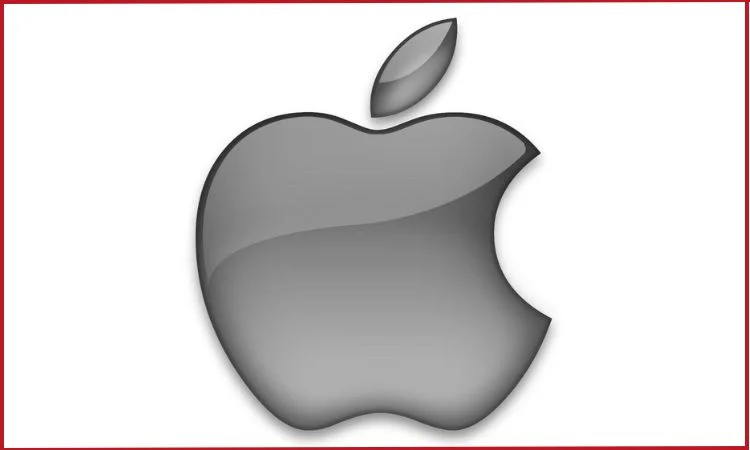
In Walter Isaacson’s biography, Jobs disclosed that he was currently following one of his fruitarian diets. He got the bright idea for the company name that would transform his life while driving home from an apple farm. “iWoz: Computer Geek to Cult Icon,” written by Steve Wozniak, attests to this. After that trip, Wozniak, who drove Jobs home from the airport, claimed to have had the idea for the company name while driving. Jobs claimed that the “apple orchard” he had described was a commune.
Jobs’ biography states that he thought the name “Apple Computer” sounded “energetic, fun, and not intimidating”—all essential qualities for a company that aimed to transform computing and make it far more approachable.
Apple – Founders
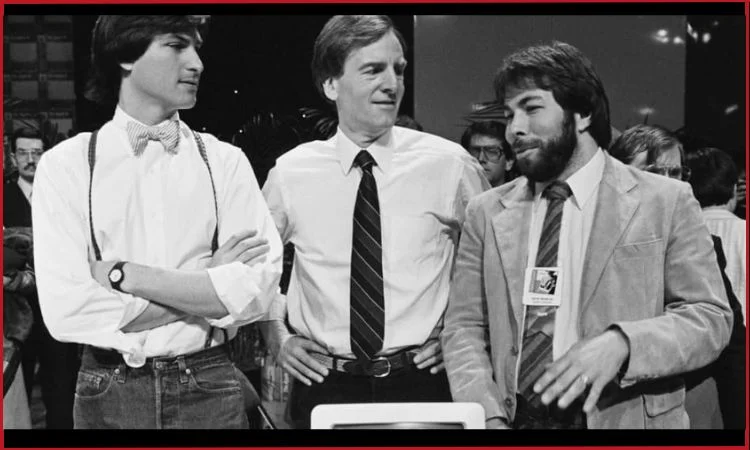
On April 1, 1976, Steve Jobs, Ronald Wayne, and Steve Wozniak entered into a business agreement to form the Apple Success Computers Company.
Steve Jobs
Co-founder of Apple and former CEO of Pixar Animation Studios was Steve Jobs. Following his 1972 graduation from Cupertino, California’s Homestead High School, Jobs enrolled at Portland, Oregon’s Reed College. After one semester, he left to pursue his studies in philosophy and foreign cultures.
Steve Jobs joined Atari Inc., a well-known video game manufacturer at the time because he had a strong enthusiasm for technology. He became friends with fellow designer Steve Wozniak and went to Homebrew Computer Club meetings with him. Jobs left his position as CEO of Apple on August 24, 2011, and was appointed chairman of the board of directors. The day Jobs died was October 5, 2011.
Ronald Wayne
Ronald G. Wayne is primarily known for being one of the co-founders of the tech business Apple, along with Steve Jobs and Steve Wozniak, who served as the company’s major visionaries. Compared to the years he spent creating and producing slot machines and other high-end gaming equipment, it was a short trip. He is a talented inventor who has been granted more than a dozen US patents that span a broad range of crucial ideas.
Steve Wozniak
Steve Wozniak has been a well-known figure in Silicon Valley and an investor for the last thirty years. His creation of the Apple I and II, the company’s first series of computers, influenced the widely used Mac.
Apple – Startup Story
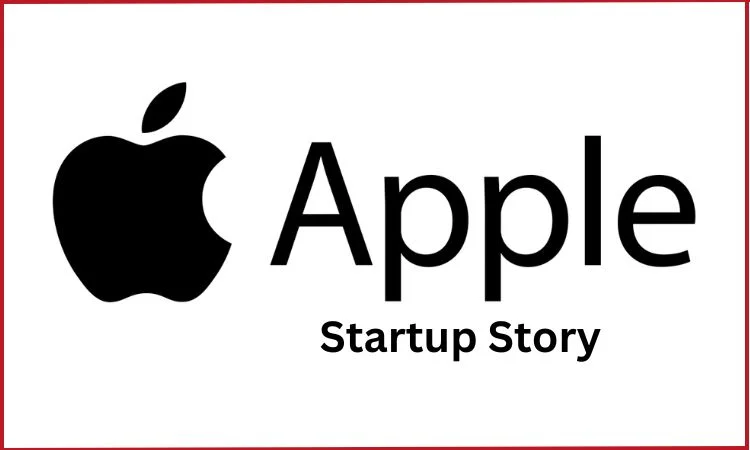
Steve Jobs and Wozniak established Apple Computer Inc. in 1976. with Wozniak’s Apple I personal computer. The next year, Jobs presented his Apple II personal computer, which included a floppy disc drive, color graphics, a keyboard, and a central processor unit.
To market Steve Wozniak’s custom-built PC, the Apple 1, Wozniak, Steve Jobs, and Ronald Wayne founded Apple. The motherboard that came with the Apple 1 included a basic textual-video chipset, RAM, and a central processor unit. At the time, it didn’t have a built-in keyboard, display, case, or other HIDs.
When it was first released in July 1976, the Apple 1 cost $666.66. Wayne decided to leave the company shortly after it was founded. He took the $800 cheque. which, forty years later, was valued at almost $72 billion. The first Apple logo was created by Wayne by hand; in 1977, Rob Janoff’s bitten apple sign took its place.
The founding date of Apple Computer Inc. was January 3rd, 1977. Mike Markkula provided the team with the capital and business savvy they needed; he was intrigued by the Apple-1. The third worker, Mike Markkula, held a third of the company. Because he thought Steve was too young and inexperienced for the position, he proposed Michael Scott to be the company’s first president and CEO.
In 1977, Wozniak’s Apple II design was made available. With VisiCalc, the Apple II computers managed to maintain their competitive edge against Tandy and Commodore PET, the industry leaders. a computer program and spreadsheet revolution. VisiCalc gave users additional incentive to purchase the Apple II due to its office interoperability. With the introduction of color graphics, the Apple II was able to revolutionize the computer industry. By 1978, Apple had a real office with a large staff and an Apple II production division.
In the ensuing years, Apple’s revenue increased every four months. Their yearly revenues rose from $775,000 to $118 million (an average annual growth rate of 533%), between September 1977 and September 1980.
Apple went public on December 12, 1980, for $22 per share. With its immediate $4.6 million share offering, Apple raised more capital than almost any other initial public offering (IPO) since Ford Motor Company in 1956.
| Year | Revenue($lon) |
| 2015 | 233.6 |
| 2016 | 215.4 |
| 2017 | 229.2 |
| 2018 | 265.5 |
| 2019 | 260.1 |
| 2020 | 274.5 |
| 2021 | 365.8 |
| 2022 | 394.1 |
| 2023 | 383.2 |
Apple – The fall
Steve Jobs and Wozniak established Apple Computer Inc. in 1976.
Apple’s “55 or die” plan backfired as IBM clones became more affordable and Microsoft’s power increased in the latter half of the decade. Macs were limited even if they had a large software library. Conversely, Windows 3.0 was available for purchase for inexpensive commodity computers.
With the advent of the Quadra, Centris, and Performa, Apple announced its intention to reenter the market. At the time, the only ways to obtain Apple computers were through authorized dealers or mail orders, so the Performa was intended to be a department shop and lifestyle merchant stocking item. There were no Apple Stores back then. Conversely, customers found this confusing because they didn’t comprehend the differences among the variants.
Apple – When did It become a Big Name?
In 2001, Apple unveiled another invention: the iPod. Its 5GB hard drive was marketed as having memory equivalent to hundreds of music tracks, which at the time was an incredible feat for an MP3 player.
To supplement this, Apple introduced the iTunes Music Store in 2003. This came after Apple’s digital music software solution, iTunes, was introduced two years earlier. Apple released a Windows version in 2003, and during the following few years, it spread to the rest of the world. When it changed its name to the iTunes Store in 2006 to offer video services as well, the iTunes Music Store provided US citizens with an easy way to legally purchase music online. Because Apple computers used Intel CPUs, Windows could be installed on them. In the future, Intel will power all Apple PC devices, including iMacs and MacBook Pros.
To better represent its growing product portfolio, Apple Computer Inc. rebranded itself as Apple Inc. in 2007. Within the first 30 hours of its debut, 270,000 iPhones were ordered, garnering the device the nickname “Apple’s destiny changer.”
The iPad, iPod Touch, and iPhone devices were wildly successful when they first came out. In July 2008, Apple unveiled the App Store, which provided third-party software for iPhone and iPod Touch devices. In a single month, the App Store brought in 60 million dollars, with an average daily revenue of $1 million. Apple rose to become the third-largest provider of mobile devices worldwide as a result of the popularity of the iPhone.
Apple – Vision and Mission
“To bring the best user experience to its customers through its innovative hardware, software, and services” is Apple’s stated objective.
The two components of Apple’s business model are its offerings and services. With $191.9 billion in revenue from iPhone sales, $38.3 billion from wearables and accessories (including AirPods, Apple TV, Apple Watch, Beats products, HomePod, iPod touch, and accessories), $35.2 billion from Mac sales, $31.86 billion from iPad sales, and $68.4 billion from services, Apple generated more than $365 billion in revenue in 2021.
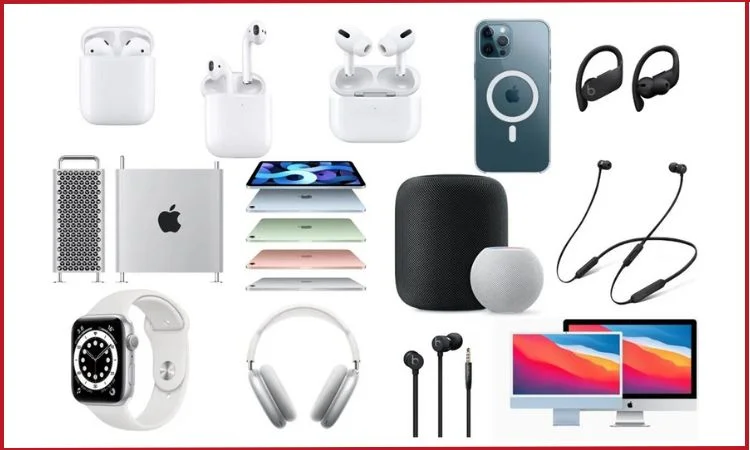
- Products include the iPhone, Mac, iPad, wearables, home appliances, and companion products (such as AirPods and Apple Watches).
- Services include licensing, Apple’s cloud services, digital content stores, streaming services, AppleCare+, and the AppleCare Protection Plan.
Apple – Competitors
Apple’s main rivals include Microsoft, Samsung, Lenovo, Dell, Sony, HP, Xiaomi, Asus, Huawei, and Oppo.
Apple – Future Plans
Apple has its worldwide Annual Developers Conference in June each year; in 2022, the June 6 keynote will take place. During the event, Apple will make its next-generation software debut; it will be ready in the autumn.
According to rumors, Apple is working on a foldable iPhone that will likely launch in 2023 and have a screen size of 7.5 to 8 inches. According to reports, Apple is developing interactive virtual eyewear with a Reality Operating System, specialized high-end screens, and an integrated processor. The device, which is expected to cost around, will integrate voice activation, touch panels, and hand gestures for interaction.
Apple is developing improved MacBook Pro models with M2 Pro and M2 Max CPUs for the 14- and 16-inch screen sizes. The 12-core CPU and 38-core GPU M2 Max processor will be ready in 2023, along with the new machines.
The narrative around Apple’s electric car research has taken many turns, but reputable Apple analyst Ming-Chi Kuo asserts that the corporation is still aiming for a launch date of 2023–2025 for a fully driverless vehicle, rather than only a technology offering.
Conclusion
With its well-designed and user-friendly devices, including the iPhone, Mac, and iPad, Apple had a significant effect. Apple’s success did not happen overnight; rather, it required a great deal of effort and commitment. Over the last forty years, Apple has continuously ranked among the most inventive and prosperous technology companies globally which has made Apple a Successful Organisation. They established an empire of consumer electronics, encompassing a wide range of items for both personal and professional usage, such as mobile phones, laptops, and compact disks.















